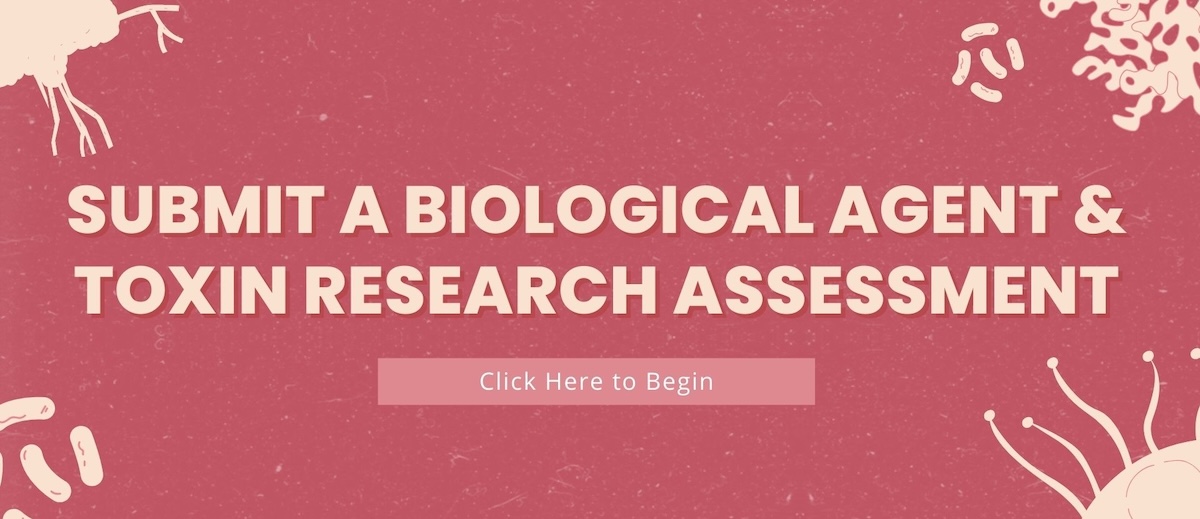Improving the Safety and Security of Biological Research
The May 5, 2025 Executive Order on Improving the Safety and Security of Biological Research directs the White House Office of Science and Technology Policy (OSTP) to define new policies that strengthen oversight, accountability, and enforcement for "dangerous gain-of-function research* on biological agents and pathogens" and synthetic nucleic acid procurement. These policies will revise or replace both the 2024 “United States Government Policy for Oversight of Dual Use Research of Concern and Pathogens with Enhanced Pandemic Potential” (DURC/PEPP) and the 2024 “Framework for Nucleic Acid Synthesis Screening.”
Following a May 7, 2025 announcement (NOT-OD-25-112), NIH:
- Rescinded a prior notice that announced NIH implementation of the 2024 USG DURC/PEPP policy (NOT-OD-25-061)
- Will not accept competitive applications for grants and cooperative agreements submitted for due dates after May 7, 2025 and/or R&D contract proposals submitted to solicitations issued after May 7, 2025 for dangerous gain-of-function research, as defined in Section 8 of the Executive Order.
- Intends to suspend ongoing funding in accordance with guidance developed under Section 3(b) of the Executive Order. All NIH awardees should review ongoing research activities to proactively identify potential dangerous gain-of-function research and identify safe actions to halt such research and to effectively comply with guidance once established.
The Office of Research is closely monitoring federal policy developments and will share updates affecting VUMC investigators. Please subscribe to the Weekly Research Update for timely news and updates.
*Gain-of-Function Attributes
The Executive Order defines “dangerous gain-of-function research” as: scientific research on an infectious agent or toxin with the potential to cause disease by enhancing its pathogenicity or increasing its transmissibility.
Covered research activities are those that could result in significant societal consequences and that seek or achieve one or more of the following outcomes:
a) enhancing the harmful consequences of the agent or toxin;
b) disrupting beneficial immunological response or the effectiveness of an immunization against the agent or toxin;
c) conferring to the agent or toxin resistance to clinically or agriculturally useful prophylactic or therapeutic interventions against that agent or toxin or facilitating their ability to evade detection methodologies;
d) increasing the stability, transmissibility, or the ability to disseminate the agent or toxin;
e) altering the host range or tropism of the agent or toxin;
f) enhancing the susceptibility of a human host population to the agent or toxin; or
g) generating or reconstituting an eradicated or extinct agent or toxin.
Steps for VUMC PIs
If you are working with or proposing work with a biological agent or toxin:
- Answer relevant intake questions in Coeus, PEER, and other internal review processes (e.g. OCRS, Global Support)
- Submit a VUMC assessment before starting a project or applying for funding
- Follow funding agency instructions
- Monitor communications from the Office of Research and Office of Sponsored Programs for policy and procedure updates
- Notify VUMC of project changes or new indicators via the assessment form
For more information, view the May 14, 2025 On the Horizon town hall on "Pathogens, Policy, and Progress: Navigating New Federal Regulations in Biomedical Research."
Questions? Email ResearchSecurity@vumc.org or VUMC’s Institutional Contact for Research Security, Susan Meyn. Do not include project or agent/toxin details via email. Submit the REDCap form or email ResearchSecurity@vumc.org to request a call with the Research Security team.
